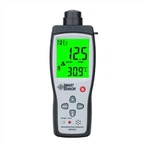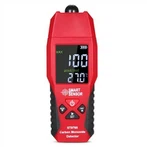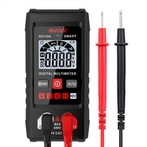Anemometers have many advantages, here are some of the more important ones:
1. Small size, minimal interference with the flow field;
2. Widely applicable. It can be used not only for gases but also for liquids, and can be used in subsonic, transonic, and supersonic flows of gases;
3. High measurement accuracy and good repeatability. The disadvantage of a hot wire anemometer is that the probe interferes with the flow field and the hot wire is prone to breakage.
4. In addition to measuring average velocity, it can also measure pulsation values and turbulence flow; In addition to measuring unidirectional motion, it can also simultaneously measure velocity components in multiple directions.
maintain
Wind speed instruments belong to the category of safety protection and environmental monitoring measuring instruments, and are mandatory calibration measuring instruments stipulated by China's Metrology Law. In addition to the corresponding calibration report required for factory sales, it is also necessary to regularly calibrate the instrument at the National Air Conditioning Equipment Quality Supervision and Inspection Center or the Building Energy and Environment Testing Center of the China Academy of Building Research in accordance with the requirements of JJG (Construction) 0001-1992 "Hot Ball Anemometer Calibration Regulations" every year, and adjust all aspects of the instrument according to the statutory calibration certificate issued by them to obtain the best working condition.
In addition to maintaining the accuracy of daily data, the following points should also be noted during daily maintenance and use:
1. It is prohibited to use anemometers in flammable gas environments.
2. It is prohibited to place the anemometer probe in flammable gases. Otherwise, it may lead to fire or even explosion.
3. Please use the anemometer correctly according to the instructions in the user manual. Improper use may result in electric shock, fire, and damage to sensors.
4. If the anemometer emits abnormal odors, sounds, or smoke during use, or if liquid flows into the interior of the anemometer, please immediately turn off the device and remove the battery. Otherwise, there is a risk of electric shock, fire, and damage to the anemometer.
5. Do not expose the probe and anemometer body to rain. Otherwise, there may be risks of electric shock, fire, and personal injury.
6. Do not touch the sensor area inside the probe.
When the anemometer is not in use for a long time, please remove the internal battery. Otherwise, the battery may leak and cause damage to the anemometer.
8. Do not place the anemometer in places with high temperature, high humidity, high dust, and direct sunlight. Otherwise, it will result in damage to internal components or deterioration of anemometer performance.
9. Do not use volatile liquids to wipe the anemometer. Otherwise, it may cause deformation and discoloration of the anemometer housing. When there are stains on the surface of the anemometer, a soft fabric and neutral detergent can be used to wipe it off.
10. Do not drop or heavily press the anemometer. Otherwise, it will cause malfunction or damage to the anemometer.
11. Do not touch the sensor part of the probe when the anemometer is charged. Otherwise, it will affect the measurement results or cause damage to the internal circuit of the anemometer






